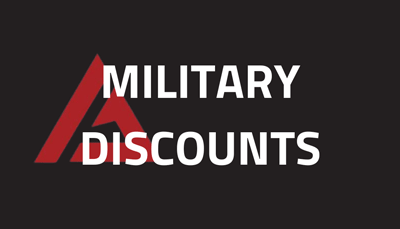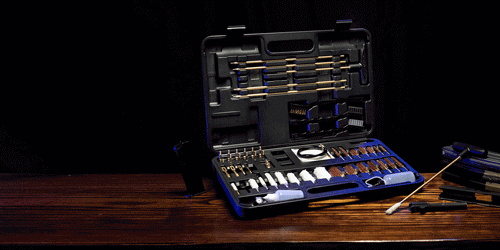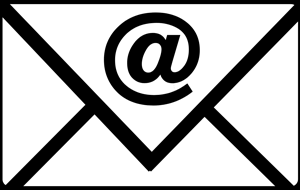How to Prepare Your Firearm for Hunting Season
The whitetail deer hunting season is fast approaching, limited to just a few weeks in October and November, and it remains one of the most popular hunting experiences. Today, we are going to talk about how to prepare your firearm for hunting season. This hunting season typically aligns with the rut, making it an ideal time to pursue these magnificent animals. Whitetail deer are prevalent across North America, with their range extending widely, especially east of the Rocky Mountains, where they can be found in abundance.
Inspecting Your Firearm
Inspecting your firearm is a critical step in ensuring it's in good working condition and safe to use. A thorough inspection can help you identify any potential issues before they become major problems, which can save you time and money in the long run. Here's a step-by-step guide on how to inspect your firearm:
Exterior Inspection
Visual inspection:Take a close look at your firearm's exterior, paying attention to any signs of wear or damage. Check for:
- Scratches or dents on the stock or receiver
- Rust or corrosion on the metal parts
- Loose or damaged screws or bolts
Check the stock: Inspect the stock for any cracks, splits, or damage. Make sure it's securely attached to the receiver.
Inspect the sights: Check the sights for any damage or misalignment. Make sure they're securely attached to the firearm.
Action and Barrel Inspection
-
Check the action: Inspect the action for any signs of wear or damage. Check for:
- Loose or worn-out parts
- Excessive play or movement
- Any signs of rust or corrosion
-
Inspect the barrel: Check the barrel for any signs of wear or damage. Check for:
- Rust or corrosion
- Pitting or erosion
- Any signs of excessive wear or damage
Internal Inspection
-
Check the chamber: Inspect the chamber for any signs of wear or damage. Check for:
- Excessive wear or erosion
- Any signs of rust or corrosion
-
Inspect the bolt or breech: Check the bolt or breech for any signs of wear or damage. Check for:
- Loose or worn-out parts
- Excessive play or movement
Cleaning and Maintenance
Proper cleaning and maintenance are essential for the longevity and reliability of firearms. A well-maintained gun is not only safer to use, but it also performs better and lasts longer. In this article, we will discuss the importance of cleaning and maintenance for firearms and provide some tips on how to do it effectively.
Cleaning Your Gun
- Disassemble: Before cleaning, disassemble your gun according to the manufacturer's instructions. This will help you access all parts that need cleaning.
- Remove loose debris: Use a soft brush or cloth to remove any loose debris, such as dirt, dust, or powder residue.
- Clean the barrel: Use a cleaning rod and brush to clean the barrel. Apply a cleaning solution, such as Hoppes No. 9, to the brush and run it through the barrel several times.
- Clean the action: Use a soft brush and cleaning solution to clean the action, including the bolt, receiver, and trigger.
- Lubricate: Apply a small amount of lubricant, such as gun oil or silicone spray, to moving parts to keep them running smoothly.
- Reassemble: Once all parts are clean and lubricated, reassemble your gun according to the manufacturer's instructions.
A well-maintained firearm is essential for safety and performance. Start by using a high-quality cleaning kit, such as our Gun Cleaning Kit, which includes everything you need for thorough cleaning. Regularly clean your firearm to remove residue and ensure it functions smoothly. Be sure to follow the manufacturer's instructions for best results.

Ammunition Selection
Selecting the right ammunition for your firearm is crucial for optimal performance, accuracy, and safety. With so many types of ammunition available, it can be overwhelming to choose the right one. In this article, we will discuss the factors to consider when selecting ammunition and provide some tips on how to make the right choice.
Factors to Consider
- Caliber: Make sure the ammunition is compatible with your gun's caliber. Using the wrong caliber can be dangerous and may damage your firearm.
- Bullet type: Different bullet types are designed for specific purposes, such as hunting, target shooting, or self-defense. Choose a bullet type that suits your needs.
- Grain weight: The grain weight of the bullet affects its velocity, trajectory, and penetration. Heavier bullets tend to be more stable and accurate, while lighter bullets are faster and more suitable for smaller game.
- Velocity: The velocity of the bullet affects its range, accuracy, and stopping power. Faster bullets are better for longer ranges, while slower bullets are better for closer ranges.
- Expansion: The expansion of the bullet upon impact affects its stopping power and penetration. Bullets that expand more tend to be more effective for hunting and self-defense.
- Penetration: The penetration of the bullet affects its ability to reach vital organs in game or stop an attacker. Bullets that penetrate too deeply may over-penetrate and cause unintended damage.
- Price: Ammunition can vary significantly in price, depending on the brand, quality, and type. Set a budget and choose ammunition that meets your needs within that budget.

Types of Ammunition
- Full Metal Jacket (FMJ): FMJ bullets are designed for target shooting and are less expensive than other types of ammunition. They are not suitable for hunting or self-defense.
- Hollow Point (HP): HP bullets are designed for hunting and self-defense. They expand upon impact, creating a larger wound channel and more stopping power.
- Soft Point (SP): SP bullets are designed for hunting and are similar to HP bullets but have a softer point that expands more slowly.
- Ballistic Tip (BT): BT bullets are designed for hunting and have a polymer tip that helps them expand and penetrate more effectively.
- Armor Piercing (AP): AP bullets are designed for law enforcement and military use. They are designed to penetrate armor and are not suitable for hunting or self-defense.
Sight and Scope Adjustments
Proper sight and scope adjustments are crucial for accurate shooting. Whether you're a seasoned shooter or a beginner, understanding how to adjust your sights and scope can make a significant difference in your shooting performance. In this article, we'll cover the basics of sight and scope adjustments and provide tips on how to fine-tune your aim.
Types of Sights
- Open Sights: Open sights are the most basic type of sight and consist of a rear sight and a front sight. They are adjustable for windage and elevation.
- Peep Sights: Peep sights are a type of open sight that uses a small aperture to align the rear sight with the front sight.
- Telescopic Sights (Scopes): Scopes are optical sights that use a lens to magnify the target. They are adjustable for windage, elevation, and parallax.
Adjusting Open Sights
- Windage Adjustment: To adjust the windage, turn the rear sight left or right. Turning the sight left moves the point of impact left, and turning it right moves the point of impact right.
- Elevation Adjustment: To adjust the elevation, turn the rear sight up or down. Turning the sight up moves the point of impact up, and turning it down moves the point of impact down.
Adjusting Scopes
- Windage Adjustment: To adjust the windage, turn the windage knob left or right. Turning the knob left moves the point of impact left, and turning it right moves the point of impact right.
- Elevation Adjustment: To adjust the elevation, turn the elevation knob up or down. Turning the knob up moves the point of impact up, and turning it down moves the point of impact down.
- Parallax Adjustment: To adjust the parallax, turn the parallax knob until the reticle is sharp and clear.

Safety Gear and Accessories
Safety gear and accessories are essential for any gun owner or shooter. They help protect you from potential hazards and ensure a safe and enjoyable shooting experience. In this article, we'll cover the most important safety gear and accessories you should consider.
Safety Gear








